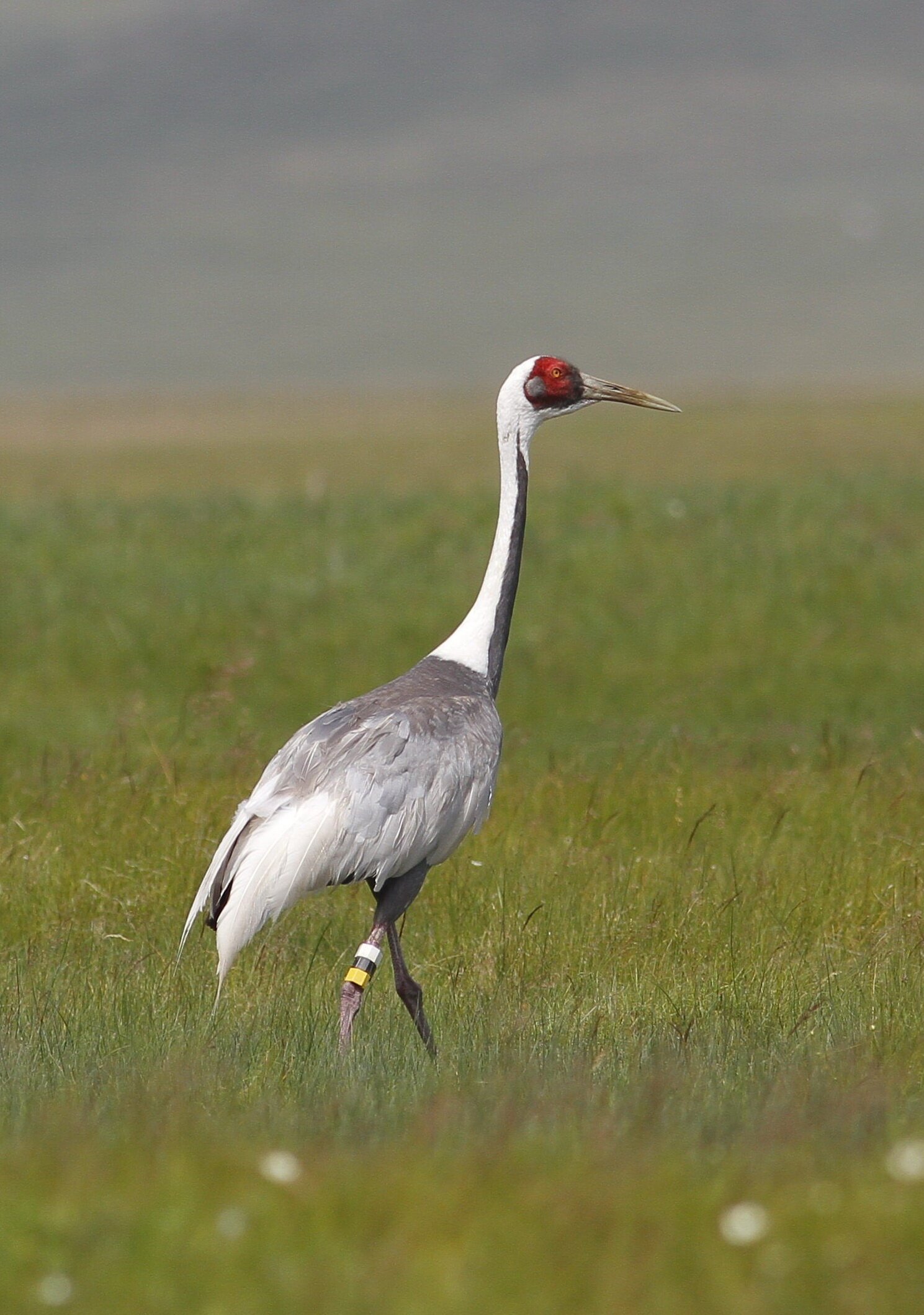
Knowing how animals use their environments to survive and thrive is a key challenge for predicting how global climate change will affect wildlife. A global collaborative study of four species of crane has shed light on the way that migrations are finely tuned to unpredictable and complex environments.
A team from 10 countries combined novel animal tracking technology, remote-sensed information about the environment, and a new statistical framework to gain insight into four iconic species: common cranes, white-naped cranes, black-necked cranes, and demoiselle cranes.
The study, led by scientists from the Max Planck Institute of Animal Behavior and Yale University, was published in Proceedings of the National Academy of Sciences on September 23.
The researchers used tiny GPS tracking devices to follow the movements of 104 cranes in Africa, Asia, and Europe. These devices included unique solar-powered GPS leg bands developed by scientists from MPI-AB. The tracking data revealed the impressive migrations that cranes undertook.
Some of the migratory routes exceeded 6,400 km of travel round trip and required crossing barriers such as the Alps or Himalaya mountain ranges, the deserts of the Arabian peninsula, or the Mediterranean Sea.
In addition to the tracking study, the researchers also developed a statistical framework that revealed how the cranes’ movements relate to aspects of the environment, such as the presence of crops or water bodies nearby, and the temperature and vegetation cover on the land.
“Animals have to satisfy their own needs with what they can get from their environment, but both of these are changing constantly,” says Scott Yanco, first author on the study and a postdoctoral researcher at the University of Michigan.
“This creates an intriguing optimization problem that we wanted to know if cranes were solving through long-distance migration.”
The researchers found that all four crane species experienced starkly different environmental conditions over a year, and that these periods were synchronized with important events in their lives. This was particularly pronounced when comparing temperatures or resource availability on wintering and summer breeding grounds.
For some, the migrations themselves entailed huge shifts in environmental conditions. For example, the demoiselle cranes migrated across the Tibetan plateau and had to contend with massive fluctuations in temperature while doing so.
“We suspect this all has to do with different biological needs during these different times of the year,” adds Yanco, who did the research when he was at the Yale Center for Biodiversity and Global Change. For example, common cranes clearly emphasized agricultural areas during the late summer, a period that aligns with raising juveniles and preparing for fall migration.
“This is exactly when we would expect them to want easy access to food,” he says.
For other species, access to food may come at a cost. The black-necked cranes in the study had to decide between safe roosting habitat and abundant resources.
“Amazingly, the balance between these competing needs changed over the year depending on what the birds were doing,” adds Yanco. During migration they opted for safer roosting conditions, whereas during breeding they leaned towards abundant food.
“This type of shifting emphasis depending on what cranes need at any given time is what we were expecting to see,” says Ivan Pokrovsky, a postdoctoral researcher at MPI-AB and last author on the study.
“But we were blown away by how well the cranes used movement to resolve trade-offs among competing needs and to access certain environments during key periods of the year.”
Understanding how animals interact with their surroundings not only gives us a more nuanced view of how they survive in complex environments—it is crucial for developing policy and management actions to address the dual crises of climate change and biodiversity loss, the authors say.
The study’s framework offers a statistical tool for understanding the complicated relationships between animals and their environments that can be widely applied to conservation and management efforts of wildlife.
“When we know how animals use certain environmental conditions, we can make better predictions about how species might respond to human-caused global change and develop more effective interventions that ensure we preserve the conditions species need to survive,” says Pokrovsky.
More information:
Scott W. Yanco et al, Migratory birds modulate niche tradeoffs in rhythm with seasons and life history, Proceedings of the National Academy of Sciences (2024). DOI: 10.1073/pnas.2316827121
Provided by
Max Planck Society
Citation:
Study of four crane species reveals complicated relationships between birds and their environments (2024, September 23)
retrieved 23 September 2024
from https://phys.org/news/2024-09-crane-species-reveals-complicated-relationships.html
This document is subject to copyright. Apart from any fair dealing for the purpose of private study or research, no
part may be reproduced without the written permission. The content is provided for information purposes only.
